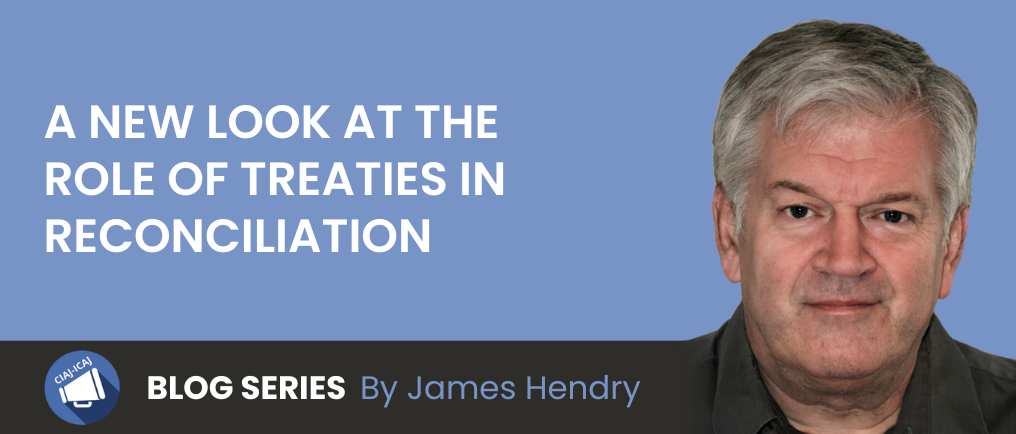A New Look at the Role of Treaties in Reconciliation

This blog post is part of a series on “SCC Decisions and more” written by CIAJ’s collaborator James Hendry. Read all his posts here.
New clarification on Reconciliation by Treaty
Two recent Supreme Court of Canada cases try to advance the fundamental objective of the modern law of treaty rights: the reconciliation of the interests of Indigenous and non-Indigenous peoples. Both cases show nation-to-nation treaty-making unfolding within the Canadian Constitution.
The Court has observed that treaties reconcile pre-existing Aboriginal sovereignty with assumed Crown sovereignty and define s. 35 Aboriginal rights. The Court explained in Little Salmon that historic treaties aim to reconcile Indigenous inhabitants to the assertion of European sovereignty over traditional territories of First Nations colonization and settlement while modern comprehensive treaties involve lengthy negotiations between well-resourced and sophisticated parties aiming at defining precise property and governance rights and obligations.
Modern treaties look more like nation-to-nation reconciliation.
O’Bonsawin J’s unanimous reasons in Shot Both Sides affirm the nature of treaties as creating sacred, legal obligations enforceable at common law. She summarizes the Federal Court of Appeal’s restatement of Supreme Court rulings that treaties with First Nations are not international agreements between sovereign states, but nation to nation development within one sovereign state. The trial judge’s very thorough review of the contextual evidence of the evolution of the Blood Reserve in 19th century shows the one-sidedness of the historic treaty process and a Crown misrepresentation of the adequacy of the amount of land given the Blood Nation under Treaty 7. However, because the breach was discoverable in 1971 before s. 35 of the Constitution Act, 1982 came into force, O’Bonsawin J agrees the Alberta Limitations of Actions Act ends enforceability.
However, O’Bonsawin J notes the Court’s acceptance of this overriding effect on treaties has never been subject to s. 35 review. She declares the Crown had grievously breached the Treaty based on the practical effect of a declaration advancing reconciliation outside the courtroom, restoring the nation-to-nation relationship and honour of the Crown.
Dickson v Vuntut Gwitchin First Nation involves a Charter discrimination claim against a term in the Vuntut Constitution under a modern treaty, made under a cascade of agreements and federal and territorial legislation and a history of self-government from time immemorial. The term requires a Councillor reside in Vuntut territory. Dickson wanted to be a Councillor but lived, worked, and tended a disabled child in Whitehorse, far from Vuntut lands.
Vuntut sets up the issues before the Court by arguing the Charter did not apply to them or alternatively the residency requirement was protected by the s. 25 non-derogation provision in the Charter for Aboriginal, treaty, or other rights.
The Charter applies: s. 32
Perhaps the main effect of the decision on the shape of reconciliation is the Court’s holding that the Charter applies to the Vuntut residency restriction.
The majority interprets s. 32 very broadly, citing cases where the Court’s concern is that Parliament and provincial/territorial legislatures and governments named in ss. 32 and 30 might try to avoid their Charter commitments by empowering other institutions to act for them in matters within their constitutional authority. Such institutions can be “government” in two ways. First, the Vuntut have a “government by nature” because of its electoral, taxing, and law-making powers sourced, at least in part, and regulated by federal and territorial implementing legislation as an exercise of a statutory power under 91(24) of the Constitution Act, 1867. Second, Vuntut’s coercive law-making power is a “governmental activity” for Charter purposes. After a very complex skate around the issue of how federal legislation might be reconciled with inherent Indigenous self-government, the majority does not decide whether the Charter applies to an exercise of an inherent right unconnected to federal legislation, presumably because they note that the Court has not yet recognized an Aboriginal right to self-government.
Martin and O’Bonsawin JJ concur that the Charter applies because the Charter was meant to address a power imbalance between government and the governed and the Vuntut’s coercive law-making power makes it a government by nature. They disagree with the theory that Indigenous governments are sourced even in part by Parliament’s authorization which might hamper the proper recognition of an inherent right in the future. Indigenous governments should simply be recognized as exercising powers within matters within the authority of Parliament and provincial and territorial governments subject to the Charter.
Rowe J held close to the text of s. 32 that the Charter applied only to the federal, provincial/territorial governments and not to Vuntut, arguing that sticking to the text promoted reconciliation by allowing Indigenous people to chose what rights their governments were bound to respect.
The Charter applies: s. 25
The majority finds the Charter’s own limits on its application in s. 25 protect collective rights vital to “cultural difference, prior occupancy, prior sovereignty, or participation in the treaty process” against individual Charter rights. The majority holds the residence requirement was an “other right” for s. 25 purposes because it aimed at protecting Vuntut Indigenous difference.
This supports reconciliation.
How absolute is s. 25’s limit on individual Charter rights “abrogating or derogating” Indigenous collective rights? The Court’s framework requires the claimant to show a prima facie breach of the Charter, and, if yes, the Indigenous government must prove an Aboriginal, treaty or other right that protects Indigenous difference. Section 25 acts as a shield only where an irreconcilable and non-trivial conflict exists between the claimant’s right and that of the Indigenous collective, yielding only to ss. 28 and 35(4) ensuring rights equally to either sex. If s. 25 does not apply, then the Indigenous government might prove justification under s. 1.
The concurring justices thought s. 25 should be interpreted flexibly to focus on a law’s necessity to the Indigenous collective identity, rather than literally, so as not to preclude a member’s individual claim simply because it challenges the exercise of a power in a self-government agreement. Governments will be governments, especially in gender matters.
Conclusion
The majority concludes Dickson had established her prima facie case of discrimination because she was deprived of political participation based on the immutable ground of non-resident membership in a self-governing Indigenous community. However, s. 25 takes primacy based on an irreconcilable conflict with Vuntut’s collective right to have members of its government reside on traditional territory, the source of its laws and governing traditions. Her discrimination claim is dismissed.
Martin and O’Bonsawin JJ think that the residency requirement was an internal regulation of the Vuntut not aimed at recognizing the special status of Indigenous collectives and so does not attract the protection of s. 25. The Vuntut fail to prove a s. 1 justification, for lack of minimal impairment of the rights of the claimant and because the collective interest does not outweigh her right, because she and others must live away due to colonial and assimilationist policies.
The Court offers considerable definition of reconciliation by treaty in these cases. How will it decide how the Charter applies to an Indigenous government exercising inherent self-government authority alone?
***Not for use as legal advice

